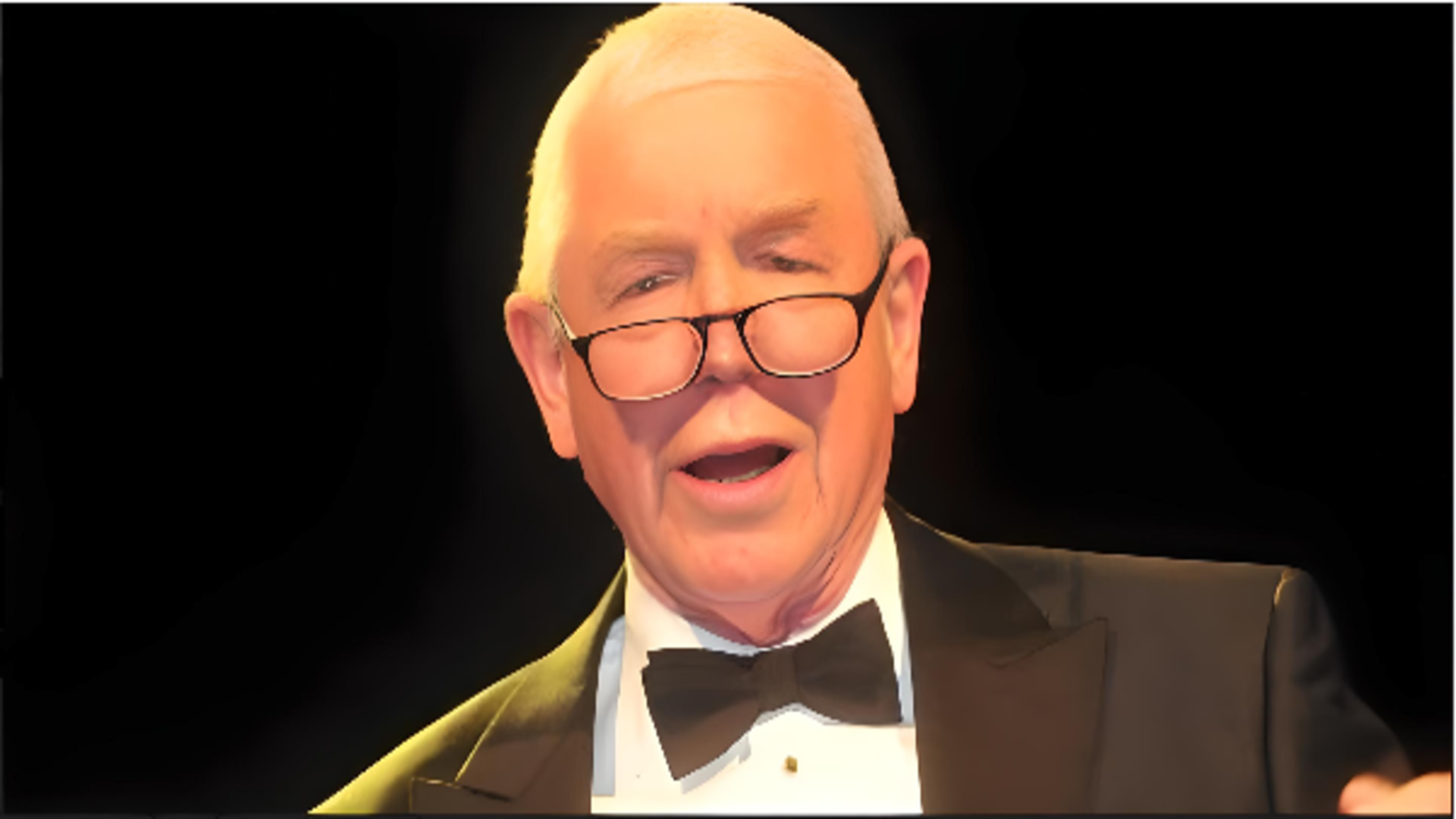Unveiling The Legacy: J.P. Morgan's Net Worth At Death
When you hear the name J.P. Morgan, you’re probably thinking about one of the most legendary figures in the world of finance. The guy was a game-changer, a titan who shaped the financial landscape of his time and left an indelible mark on history. But what about his net worth at death? How much wealth did this powerhouse accumulate during his lifetime? Let’s dive deep into the world of J.P. Morgan and uncover the truth behind his financial legacy.
Now, if you’re anything like me, you’ve probably wondered how someone could amass so much wealth back in the day. We’re talking about the late 19th and early 20th centuries—a time when the global economy was still finding its footing. J.P. Morgan wasn’t just any businessman; he was a mastermind who navigated the waters of finance with precision and determination. His story is one of ambition, influence, and unsurpassed success.
So, buckle up because we’re about to embark on a journey through the life and times of J.P. Morgan. From his early days to his final moments, we’ll explore the factors that contributed to his immense wealth and the controversies that surrounded his empire. By the end of this article, you’ll have a clearer picture of J.P. Morgan’s net worth at death and the lasting impact he had on the world of finance.
- Adam Curry The Man Who Shaped The Podcasting Revolution
- Larry Bird Net Worth The Journey Of A Basketball Legend
Table of Contents
- Aylin Mujica The Rise Of A Colombian Powerhouse In Entertainment And Beyond
- Noel Fitzpatrick The Man Behind The Magic Of Saving Lives
J.P. Morgan's Net Worth at Death
Controversies Surrounding J.P. Morgan
Comparing J.P. Morgan's Wealth to Modern Standards
Historical Context of J.P. Morgan's Wealth
Early Life and Background
J.P. Morgan wasn’t born into riches, but he sure as heck knew how to create them. His full name was John Pierpont Morgan, and he was born on April 17, 1837, in Hartford, Connecticut. His father, Junius Spencer Morgan, was a successful banker, which gave young J.P. an early introduction to the world of finance. Growing up, he had access to the best education and resources, and it wasn’t long before he started making waves in the business world.
By the time he was in his 20s, J.P. Morgan had already begun working in the financial sector, learning the ropes and honing his skills. His early career was marked by a series of smart investments and strategic partnerships that laid the foundation for his future success. But let’s not forget, back then, the financial world was a whole different beast. There were no computers, no internet, just good old-fashioned grit and determination.
Key Facts About J.P. Morgan’s Early Years
- Born in Hartford, Connecticut, in 1837.
- Son of Junius Spencer Morgan, a prominent banker.
- Received top-tier education and training in finance.
Biography of J.P. Morgan
Let’s take a moment to break down the life of J.P. Morgan in more detail. The guy wasn’t just a businessman; he was a force of nature. From his early days in banking to his role in shaping some of the largest corporations in America, J.P. Morgan’s influence was felt far and wide. Below is a quick rundown of his life:
| Category | Details |
|---|---|
| Full Name | John Pierpont Morgan |
| Date of Birth | April 17, 1837 |
| Place of Birth | Hartford, Connecticut |
| Occupation | Banker, Financier, and Industrialist |
| Marital Status | Married to Amelia Sturges (deceased) and Frances Louisa Tracy |
| Children | Four children with Frances Tracy |
| Date of Death | March 31, 1913 |
As you can see, J.P. Morgan lived a life full of accomplishments and challenges. His journey was anything but ordinary, and his impact on the financial world is still felt today.
Building the Business Empire
Now, let’s talk about how J.P. Morgan built his empire. The guy was a master strategist, and he had a knack for identifying opportunities where others saw risks. One of his most famous achievements was the creation of U.S. Steel, which became the world’s first billion-dollar company. Can you even imagine that back in the early 1900s? It’s mind-blowing!
But U.S. Steel was just the tip of the iceberg. J.P. Morgan also played a crucial role in the development of General Electric, International Harvester, and AT&T, among others. His ability to bring together competing companies and create monopolies was unmatched. Some people loved him for it, while others criticized him for his aggressive business tactics.
Strategies That Made J.P. Morgan Successful
- Acquiring struggling companies and turning them around.
- Merging competitors to create monopolies.
- Investing in emerging industries like electricity and telecommunications.
J.P. Morgan's Net Worth at Death
Alright, here’s the moment you’ve all been waiting for. What was J.P. Morgan’s net worth at death? Well, according to historical records, his estate was valued at approximately $80 million in 1913, which is roughly equivalent to $2.4 billion in today’s dollars. Now, that’s a lot of dough, but it’s important to note that J.P. Morgan wasn’t just about accumulating wealth. He was also a philanthropist who donated generously to various causes.
Interestingly, J.P. Morgan’s wealth was primarily tied up in stocks and bonds, rather than liquid cash. This was a common practice among wealthy industrialists of the time. So, while his net worth might seem staggering, it’s important to understand the context in which it was accumulated.
Factors That Contributed to J.P. Morgan’s Wealth
- Smart investments in key industries.
- Strategic mergers and acquisitions.
- Strong relationships with influential figures in politics and business.
The Legacy of J.P. Morgan
J.P. Morgan’s legacy extends far beyond his financial achievements. The guy was a cultural icon, a symbol of American ingenuity and perseverance. His contributions to the arts, education, and philanthropy are still celebrated today. For example, he was a major benefactor of the Metropolitan Museum of Art in New York City, and his personal art collection is considered one of the finest in the world.
But it’s not just about the money. J.P. Morgan’s influence on modern finance is undeniable. His methods and strategies are still studied in business schools around the globe. In many ways, he paved the way for the corporate giants we see today.
Controversies Surrounding J.P. Morgan
Of course, with great power comes great controversy. J.P. Morgan was no stranger to criticism during his lifetime. Some people accused him of using monopolistic practices to crush competition, while others criticized his role in the financial panics of the late 19th century. Despite these controversies, J.P. Morgan remained a respected figure in the business world.
It’s worth noting that J.P. Morgan often used his wealth and influence to help stabilize the economy during times of crisis. For example, during the Panic of 1907, he played a pivotal role in averting a financial meltdown by rallying other bankers to provide liquidity to the market.
Influence on Modern Finance
Today, the influence of J.P. Morgan is still felt in the world of finance. The company he founded, J.P. Morgan & Co., has evolved into one of the largest financial institutions in the world. It’s a testament to his vision and leadership that the company continues to thrive more than a century after his death.
Moreover, J.P. Morgan’s approach to business and finance has inspired generations of entrepreneurs and financiers. His emphasis on integrity, innovation, and strategic thinking remains relevant in today’s fast-paced business environment.
Comparing J.P. Morgan's Wealth to Modern Standards
When you compare J.P. Morgan’s wealth to modern standards, it’s clear that he was a true titan of industry. While his net worth might not rival that of today’s tech billionaires, it’s important to remember the context in which he operated. Back in the early 1900s, the global economy was a fraction of what it is today, and yet J.P. Morgan managed to accumulate a fortune that was unmatched in his time.
So, how does his wealth stack up against modern-day billionaires like Jeff Bezos or Elon Musk? Well, it’s not a direct comparison, but it’s safe to say that J.P. Morgan was in a league of his own during his era.
Historical Context of J.P. Morgan's Wealth
To truly understand J.P. Morgan’s wealth, you need to consider the historical context in which he lived. The late 19th and early 20th centuries were a time of rapid industrialization and economic growth. It was the era of the robber barons, a group of wealthy industrialists who dominated various industries and amassed vast fortunes.
J.P. Morgan was one of these robber barons, but he stood out for his ability to navigate the complex world of finance with grace and precision. His legacy is a testament to the power of vision, determination, and strategic thinking.
Conclusion and Final Thoughts
As we wrap up our journey through the life and times of J.P. Morgan, it’s clear that the guy was a true legend. His net worth at death was a staggering $80 million, a testament to his financial acumen and business savvy. But more than that, J.P. Morgan’s legacy is one of innovation, influence, and lasting impact.
If you’ve enjoyed this article, I’d love to hear your thoughts in the comments below. What do you think about J.P. Morgan’s approach to business and finance? Do you think his methods were ethical? Let’s keep the conversation going! And don’t forget to share this article with your friends and family who might be interested in the world of finance and history.
Until next time, keep exploring, keep learning, and keep striving for greatness!
Article Recommendations
- Married At First Sight Season 14 Love Drama And Everything In Between
- Noel Fitzpatrick The Man Behind The Magic Of Saving Lives



Detail Author:
- Name : Harvey Johnston
- Username : rashad.christiansen
- Email : whammes@yahoo.com
- Birthdate : 1995-01-12
- Address : 284 Rohan Extensions Hattiemouth, NM 45384-6363
- Phone : 1-631-992-2796
- Company : Stroman Ltd
- Job : Motor Vehicle Operator
- Bio : Qui rerum qui est velit facere. Ab voluptate fuga voluptates quam accusamus aut impedit. Deserunt sunt autem provident consequatur. Nemo aut quibusdam numquam est voluptatem.
Socials
facebook:
- url : https://facebook.com/schillerl
- username : schillerl
- bio : Quisquam provident omnis vel quibusdam. Ad aut necessitatibus aut est delectus.
- followers : 6791
- following : 2569
linkedin:
- url : https://linkedin.com/in/leone3161
- username : leone3161
- bio : Ut et molestiae at facilis.
- followers : 1416
- following : 2767
tiktok:
- url : https://tiktok.com/@leone_id
- username : leone_id
- bio : Quos qui et odio ducimus. Voluptatum consequatur qui eos.
- followers : 2395
- following : 1926